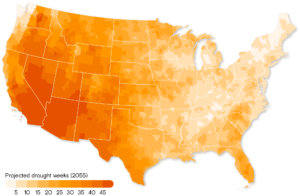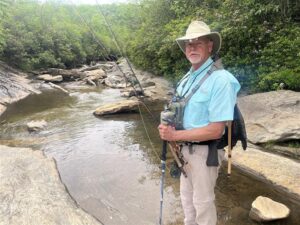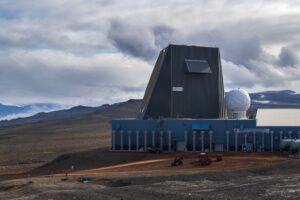They don’t build many basements in Breezy Point anymore, but Ed Power’s got one. Breezy Point is a remote stretch of New York City along the coast of the Rockaway Peninsula, colloquially known as the “Irish Riviera.” A longtime firefighter who retired as a deputy chief, Power grew up in the neighborhood and raised his kids there. For decades, his basement caused no problems.
But over the last 15 years, it’s begun to flood regularly, the water line moving steadily higher. Breezy Point was decimated by Hurricane Sandy in 2012, but Power stuck it out and returned. “The only reason I’m here is because of the ocean. I can see it, I swim in it,” he said. “And the water continues to rise. Another Sandy and I’m out of here.”
Now Power sees a different threat to the beach: the Williams’ Company’s Northeastern Supply Enhancement, or NESE, pipeline, which has been revived and fast-tracked over the past few months. The pipeline would add to a 10,000-mile network that runs all the way to Texas, carrying fracked gas from Pennsylvania through New York Harbor and terminating off Rockaway Beach, where it will connect to an existing pipeline off the coast of Long Island.
“Everything about this is a horror,” said Power. Since 2018, the NESE pipeline proposal has been rejected three times because it failed to meet New York’s water quality standards. The state’s Department of Environmental Conservation, or DEC, warned that its construction would dredge up mercury, copper, and other decades-old contaminants dumped off the coast of the city, endangering marine life and the health of local swimmers.
Despite this, Williams recently resubmitted essentially the same proposal, frustrating pipeline opponents who are concerned that the new head of the DEC, appointed by New York State Governor Kathy Hochul in May, could reverse course.
That’s because the White House has stepped in and said that it expects Governor Hochul to do just that. In April, President Trump’s Interior Secretary, Doug Burgum, ordered a halt to a $5 billion wind energy project off the coast of New York, but the administration made an abrupt turnaround a month later. The administration says they cut a deal with Hochul, asking her to allow the pipeline application to proceed in exchange for them allowing the wind project to go forward.
Governor Hochul has denied any quid pro quo, although Anders Opedal, chief executive of the wind project developer, told the Financial Times that the pipeline was “very helpful” in restarting the offshore development. Hochul had called him on May 18 to tell him she’d found a solution to the federal stop-work order; the order was lifted the following day. Though no deal was ever confirmed, Public Citizen, a consumer advocacy nonprofit, filed a formal complaint calling the alleged deal a “lurid political shakedown.”
Governor Hochul’s office and the Williams company did not respond to requests for comment by a Monday evening deadline. A representative from the DEC said that it was “committed to protecting public health and the environment and subject all permit applications to rigorous review process.” They did not clarify whether or not it was planning to deny the resubmitted pipeline application.
The Williams pipeline proposal was fast-tracked in early July, when the DEC announced that it would be holding a 30-day public comment period with no hearings, which experts say is unusual for a project of this scale. (Previous applications included a public comment period of 45 days and two public hearings.) The public comment period was extended to 45 days after an outcry from environmental groups, but the decision on hearings was final.
As of press time, the pipeline remains in limbo. Environmental activists worry that the abbreviated process is a sign that the administration has changed its mind on the proposal, in spite of the evidence previously used to justify striking it down.
“The water quality impacts of the pipelines are the same, the science is the same. The climate science is the same or worse. The pipelines are still an expensive [piece] of infrastructure that would be paid for by ratepayers and then become stranded assets when they have to be phased out thanks to New York’s climate law,” said Laura Shindell, the New York State Director of Food and Water Action. “The question is: Is the governor going to knowingly build something that’s been determined to be dangerous, expensive, and unpopular?”
A report from the Institute for Energy Economics and Financial Analysis, or IEEFA, found that the NESE pipeline would cost ratepayers an estimated $1.25 billion and provide no permanent jobs; only 9 percent of temporary construction jobs would be located in New York. National Grid, a U.K.-based company that serves as New York’s gas utility operator, claims that the pipeline is necessary to ensure a reliable gas supply during extreme weather, citing a cold snap during 2022’s Winter Storm Elliott, during which New York City came close to outages.
National Grid also pointed to an increase in energy needs from the massive data centers being planned by the country’s largest tech companies, as well as vague plans from the U.S. Department of Energy to build a data center at Brookhaven National Laboratory on Long Island. But much of the data center hype may also be overblown; across the country, utilities are dealing with duplicative requests and the IEEFA report estimates that as many as 50 percent of projected data centers may never materialize.
“I can’t argue that these data centers don’t need energy. But that’s how you’re going to justify polluting my water and killing my firemen and warming the planet?” said Ed Power, the Rockaway Beach resident. “Not in my eyes. I can’t argue that point.”
This story was originally published by Grist with the headline In New York, a pipeline proposal that just won’t die on Oct 28, 2025.




























